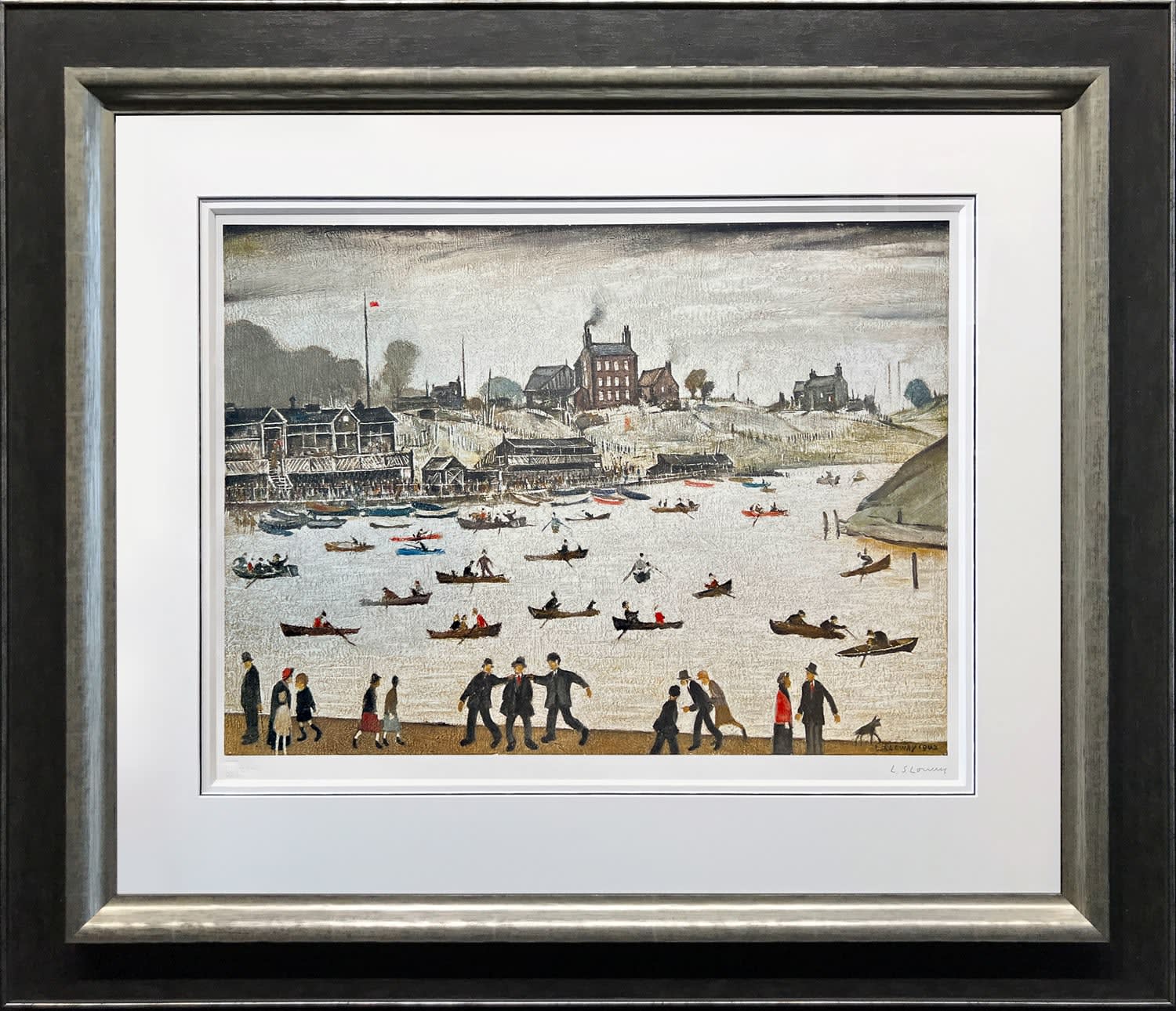Artworks
DISCOVER OUR CURATED SELECTION OF WORKS OF ART
L. S. Lowry
Crime Lake, 1972
Signed Lithograph, edition of 500
18 x 24 in
45.7 x 61 cm
45.7 x 61 cm
BCE - 125/500
Copyright The Artist
This artwork captures Crime Lake in Daisy Nook, a park in Greater Manchester. Despite its ominous name, 'Crime' is thought to originate from a local word meaning 'meadow,' not from...
This artwork captures Crime Lake in Daisy Nook, a park in Greater Manchester. Despite its ominous name, "Crime" is thought to originate from a local word meaning "meadow," not from any criminal history.
A photograph of Crime Lake verifies the precision of Lowry’s depiction, highlighting his focus on this specific locale instead of creating an imaginary scene, as he often did with his industrial landscapes. Lowry also painted other scenes of Daisy Nook, such as *Good Friday, Daisy Nook*, where he shows people enjoying leisure time, indicating his affection for the area.
Historians Judith Sandling and Mike Leber note that although the lake near Daisy Nook is favoured for recreation, Lowry uses it as a backdrop for a more unsettling scene implied by the lake's name. The painting centres on the foreground, where two men appear to be escorting a third man away, similar to the scene in *The Arrest*. Initially, the viewer's attention is drawn to the many boats on the lake, but further examination reveals small dramas among the figures, encouraging the viewer to imagine the stories. Lowry’s fascination with the unusual and his playful association of place names with events highlight his sense of humour.
Historian T.G. Rosenthal found this piece joyful, contrasting it with Lowry’s more austere lake scenes of the 1950s. He described it as a vibrant local pleasure spot, bustling with over 40 boats and numerous people, set against a lively backdrop of boatyards and shops.
A photograph of Crime Lake verifies the precision of Lowry’s depiction, highlighting his focus on this specific locale instead of creating an imaginary scene, as he often did with his industrial landscapes. Lowry also painted other scenes of Daisy Nook, such as *Good Friday, Daisy Nook*, where he shows people enjoying leisure time, indicating his affection for the area.
Historians Judith Sandling and Mike Leber note that although the lake near Daisy Nook is favoured for recreation, Lowry uses it as a backdrop for a more unsettling scene implied by the lake's name. The painting centres on the foreground, where two men appear to be escorting a third man away, similar to the scene in *The Arrest*. Initially, the viewer's attention is drawn to the many boats on the lake, but further examination reveals small dramas among the figures, encouraging the viewer to imagine the stories. Lowry’s fascination with the unusual and his playful association of place names with events highlight his sense of humour.
Historian T.G. Rosenthal found this piece joyful, contrasting it with Lowry’s more austere lake scenes of the 1950s. He described it as a vibrant local pleasure spot, bustling with over 40 boats and numerous people, set against a lively backdrop of boatyards and shops.
Would you like us to stay in touch?
* denotes required fields
We will process the personal data you have supplied in accordance with our privacy policy (available on request). You can unsubscribe or change your preferences at any time by clicking the link in our emails.
